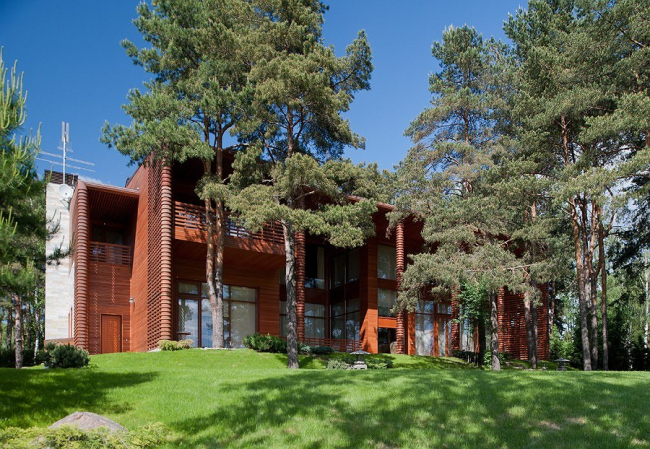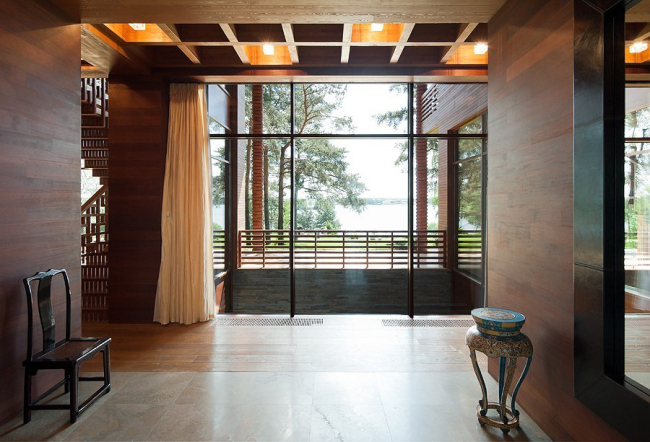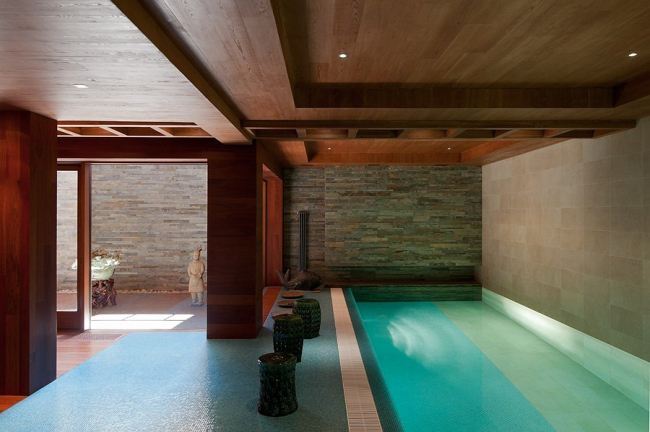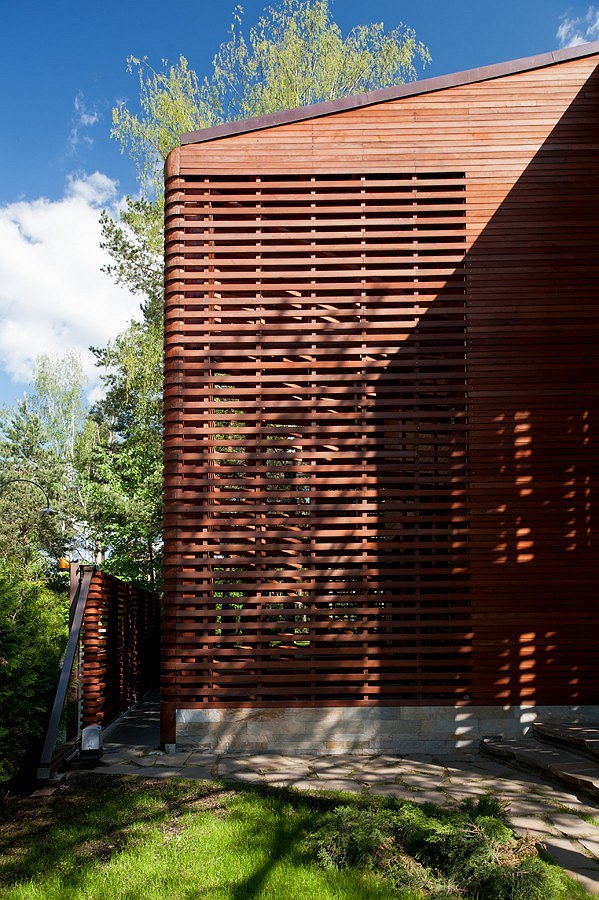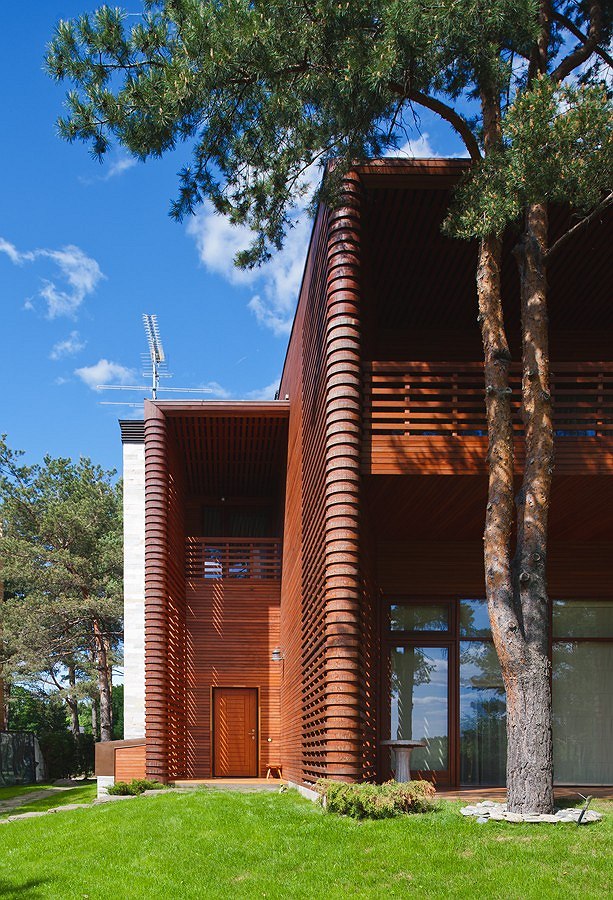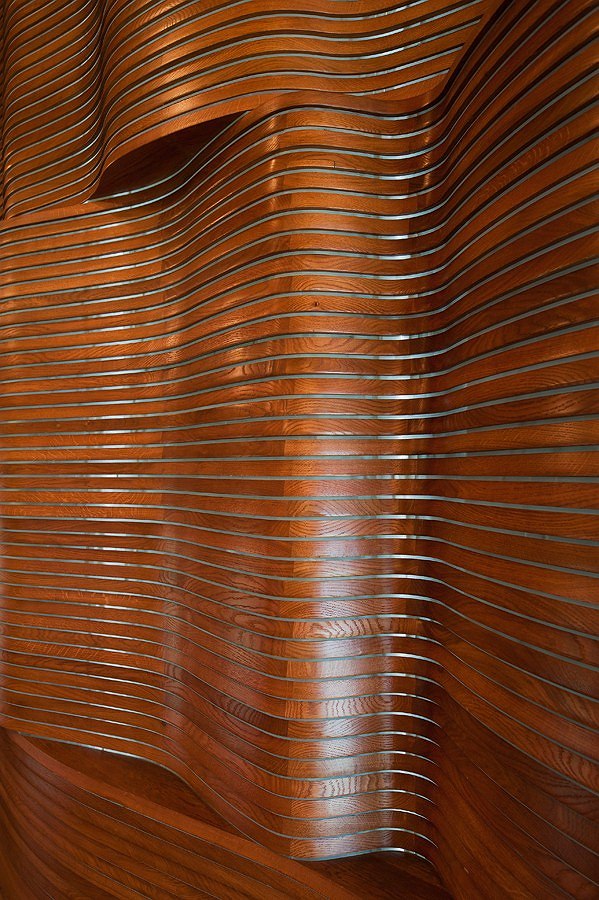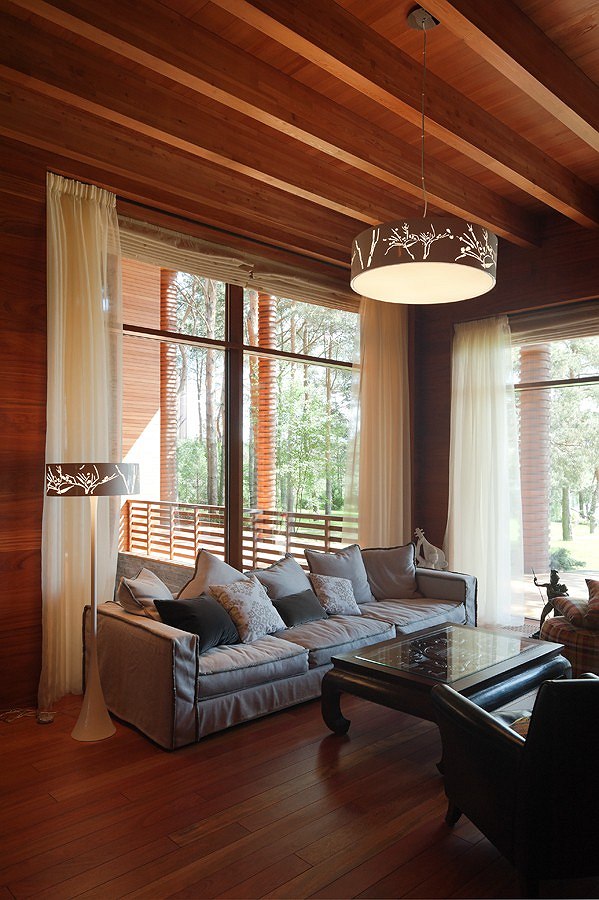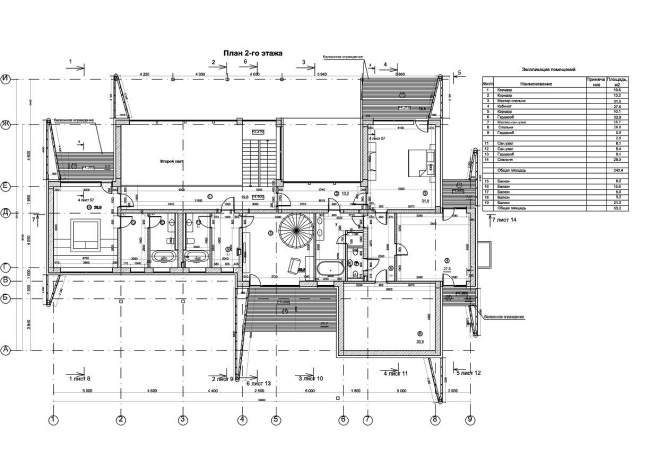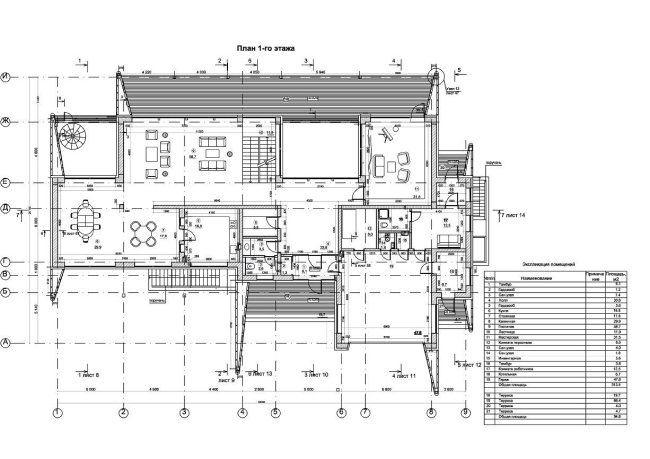|
Located near the Klyazminskoe Lake, “Pirogovo” health resort area got a new residential building with the intriguing name of “Makalun” (not a Russian word either – translator’s note). Its author, Totan Kuzembaev, has once again demonstrated his virtuoso skills in working with wood, at the same time endowing his creation with traits inherent to Chinese architecture.
The Pirogovo house got this
unusual name from his creator Totan Kuzembaev, who, in turn, borrowed it from
his commissioner. The latter once mentioned that, when translated into Chinese,
his second name sounds as “Makalun”, where “Ma” stands for “horse”, “Ka” – for
“sail”, and “Lun” – for “dragon”. The architect liked this ambiguity so much that
he immediately dubbed his new creation with this name. This is all the more
vital if one considers the fact that the project is predominantly based upon
the modern interpretations of the traditional devices of Chinese architecture –
thus Totan Kuzembaev paid tribute to the commissioner’s passion for the culture
of the Celestial Empire.
The land site, on which Totan Kuzembaev was to build yet another of his wooden masterpieces,
is located not far from the lake’s shoreline, on the main territory of the
resort and next to the road that runs through the forestland. Consequently, it
was the body of water and the road that became the starting points in the
architect’s search for the optimum place of the future house. Totan Kuzembaev turned
its southern façade to the lake thanks to which the house commands a fine lake
view. At the same time, “Makalun” is neatly “inscribed” in between the trees and
almost presses onto the road: the architect was looking to save as much as
possible of the pine wood that occupies most of the land site; this is why the
house “descends” down to the road in steps, getting around bypassing the
numerous masts of pine trees.
All the exterior finish, for the exception of the glittering surfaces of
stained glass windows, is executed of mahogany match-board. The breadth and the
density of the array of the wooden strips vary, in some places turning into an
openwork grille and in some places becoming a blank wall. The wood also is used
for making the semi-transparent partitions that at night are backlit with a
multitude of lights. Incidentally, this very interior element – the partition –
quite the Chinese thing in spirit and origin, was introduced into the
architecture of the house specifically thanks to its “nationality”.
The southern façade of the building that faces the water is predictably a more
open one. An array of slender rusticated columns, belted along their length
with thin wooden rims, gracefully supports the awning of the second floor over
the wide terrace. The color and the slenderness of the columns almost perfectly
match those of the trunks of the pine trees surrounding the building. Casting a
fleeting glimpse over the house, one will hardly tell the “man-made” trunks from
the natural ones.
The interiors of the house deserve a special mention. First of all, this is the
fireplace that determines the entire space of the living room. Therein, the architect
develops the main theme of “Makalun” exterior, skillfully and artistically
combining wood and glass that arch in sophisticated waves. The undulating surface
of the fireplace is, according to Totan Kuzembaev, yet another tribute to
Chinese culture: on the one side, the smooth curves bear resemblance to the
magnificent peaks of the Chinese mountains, while, on the other side, the glass
clearances between the oak boards, especially when backlit, bring to mind the
associations with the skyscrapers of the modern Shanghai or Beijing. The living
room at the same time gets a light open-work leading to the second floor. It
also sports, if remote, elements of traditional Chinese ornaments. None
None
None
None
None
None
None
None
None
None
None
None
None
None
None
|
